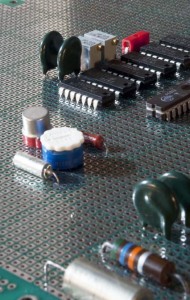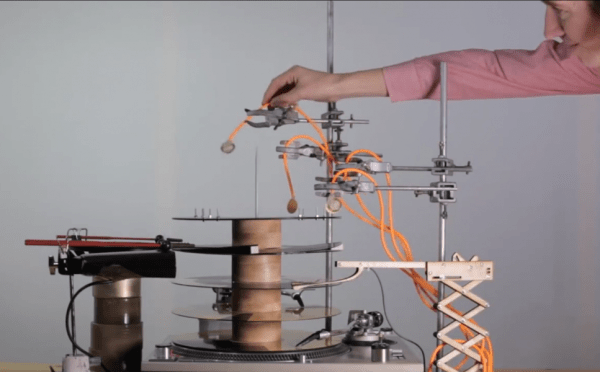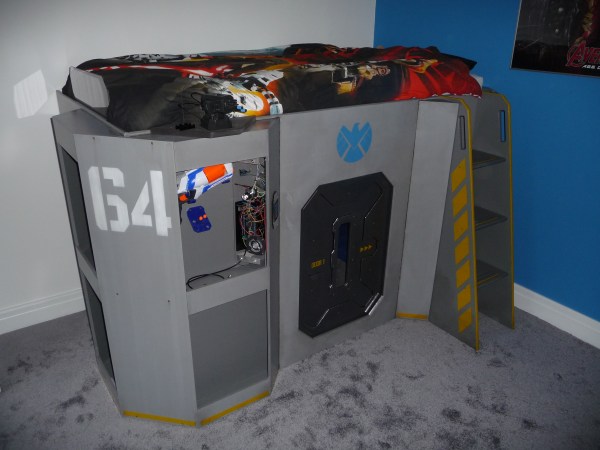Infra-red (IR) remotes are great, unless you’re in a hackerspace that’s full of crazy blinking lights and random IR emissions of all kinds. Then, they’re just unreliable. Some smart folks at Metalab in Vienna, Austria cut out the IR middle-man with a couple transistors and some audio software. They call the project HDMI Whisperer, and it’s a cute hack.
Metalab’s AV system has a web-frontend so that nobody ever has to stand up unless they want to. They bought an incredibly cheap 5-to-1 HDMI Switch to switch between displaying multiple video streams. But how to connect the switch to the Raspberry Pi server?
Fortunately, the particular switch has a remote-mounted IR receiver that connects to the main unit through a stereo audio jack. Plugging this sensor into a laptop and running Audacity while pressing the buttons on the remote got them audio files that play the remote’s codes. Simply playing these back out of the Raspberry Pi’s audio out and into the switch’s IR input through a tiny transistor circuit does the trick. Now they have a networked five-way HDMI switch for $10.
Given the low data rates of most IR remotes, we could imagine using the same trick for devices that have built-in IR receivers as well. Simply clip out the IR receiver and solder in a couple wires and then inject your “audio” signal directly.
But IR hacks are loads of fun. We’ve seen a bunch here, from the classic camera shutter-release hack to a more general tutorials on cloning IR signals with Arduinos.
Thanks [overflo] for the tip!







 The first video
The first video
 Inside are glowing display cases featuring some of his son’s favorite Marvel superhero’s equipment — ready for use. But what’s really cool is the command console.
Inside are glowing display cases featuring some of his son’s favorite Marvel superhero’s equipment — ready for use. But what’s really cool is the command console.









